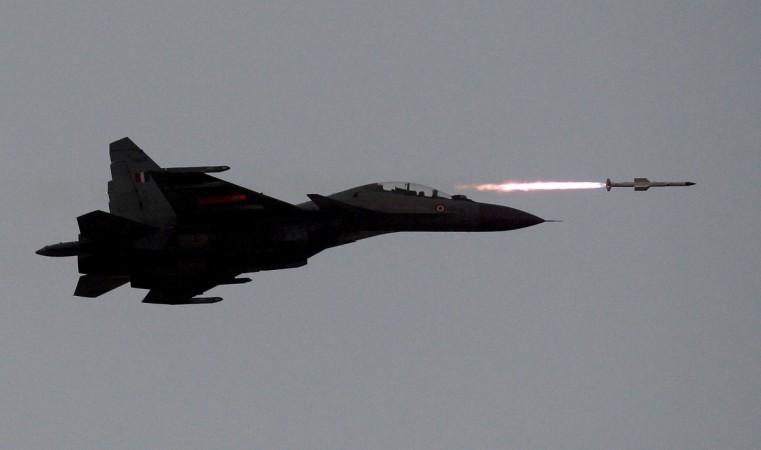
The Indian Air Force (IAF) test-fired two Astra missiles from a Sukhoi-30MKI fighter against an actual, pilot-less target aircraft (PTA) Banshee on Monday. The testing yielded a "near hit" success for the Defence Research Development Organisation (DRDO) and the IAF.
The Astra missile is a beyond visual range (BVR) air-to-air and its "near hit" has been termed as a "success," based on the missed distance calculation, defence sources said, as reported by the New Indian Express.
Though the missile did not hit the target, "they passed very close to the target and it can be termed near-hit. The mission was conducted in a war-like scenario and the missile was fired on actual targets. Data collected during the tests are being examined,'' the sources said. It was reported that the test might pave the way for its early induction in the IAF.
This is not the first time that Astra BVRAAM has been tested as only a few days ago, the IAF conducted a user trial on December 8, where the missile lost velocity after launch, slipped from the trajectory and dropped down. It exploded on the ground with a huge noise and smoke.
DRDO officials have been upbeat about the missile, as they pointed out that the test was conducted to demonstrate the missile's aerodynamic characteristics. It also demonstrated its repeatability, robustness and endurance capability of the Astra weapon system.
There will soon be two more tests for the missile. The IAF and the DRDO are also working on integrating the missile on Tejas LCA.
The missile has an operational range of 80km in head-to-head mode and 20km range in tail-chase mode. The missile has been indigenously developed and is a reliable missile due to its high Single Shot Kill Probability (SSKP). It is an all-weather missile with active radar terminal guidance, excellent electronic counter-countermeasure (ECCM) features, smokeless propulsion and process improved effectiveness in the multi-target scenario, the report added.








